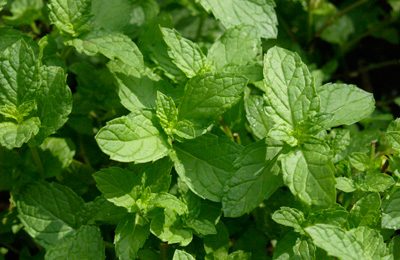Mint

Our plant this week is an herb. There are many different species of mints, and even more cultivars to choose from, but the most commonly grown are peppermint and spearmint.
If you have the right conditions, mint’s the easiest plant to grow in the world. Mint’s normally listed as needing full sun to perform well, but I found that here in scorching-hot Texas, my mint does much better with about half a day of shade.
It needs well-drained but fertile soil. Mix in lots of compost if you’re planting it in garden beds. In a container, use a high quality potting mix, and add perlite, vermiculite or compost if the mix seems a little heavy.
You should keep it moist without drowning it. Mint will visibly wilt if it needs water. If it hasn’t gone too far, it will perk back up in just a few hours after you water it or at least by the next morning. Keep it mulched, both in the ground, and in your containers, to reduce water loss.
To keep it bushy, pinch or cut back frequently. That’s a good thing, since even the scent is quite refreshing. Add it to recipes, teas and other drinks. Sprinkle some over a salad.
It can be invasive, since it sends out long stems that form roots as soon as they touch the soil. New stems can also emerge from the soil quite a distance away from your original plant. So, if you’re worried about it running through all your beds, plant it in a container.
There’s no need to buy more than one plant of each variety, because it does grow so quickly. Instead, try several and experiment with their different flavors. You can also plant it from seeds, but starting from a plant is much faster, especially if want to include several types.
Mint’s a perennial. If it dies back during the winter, simply cut it back. The new plant will emerge from the soil as soon as temperatures warm up. Usually, it will remain evergreen for us.
categories:
tags:
- Cooking +
- Evergreen +
- Herb +
- Perennials
